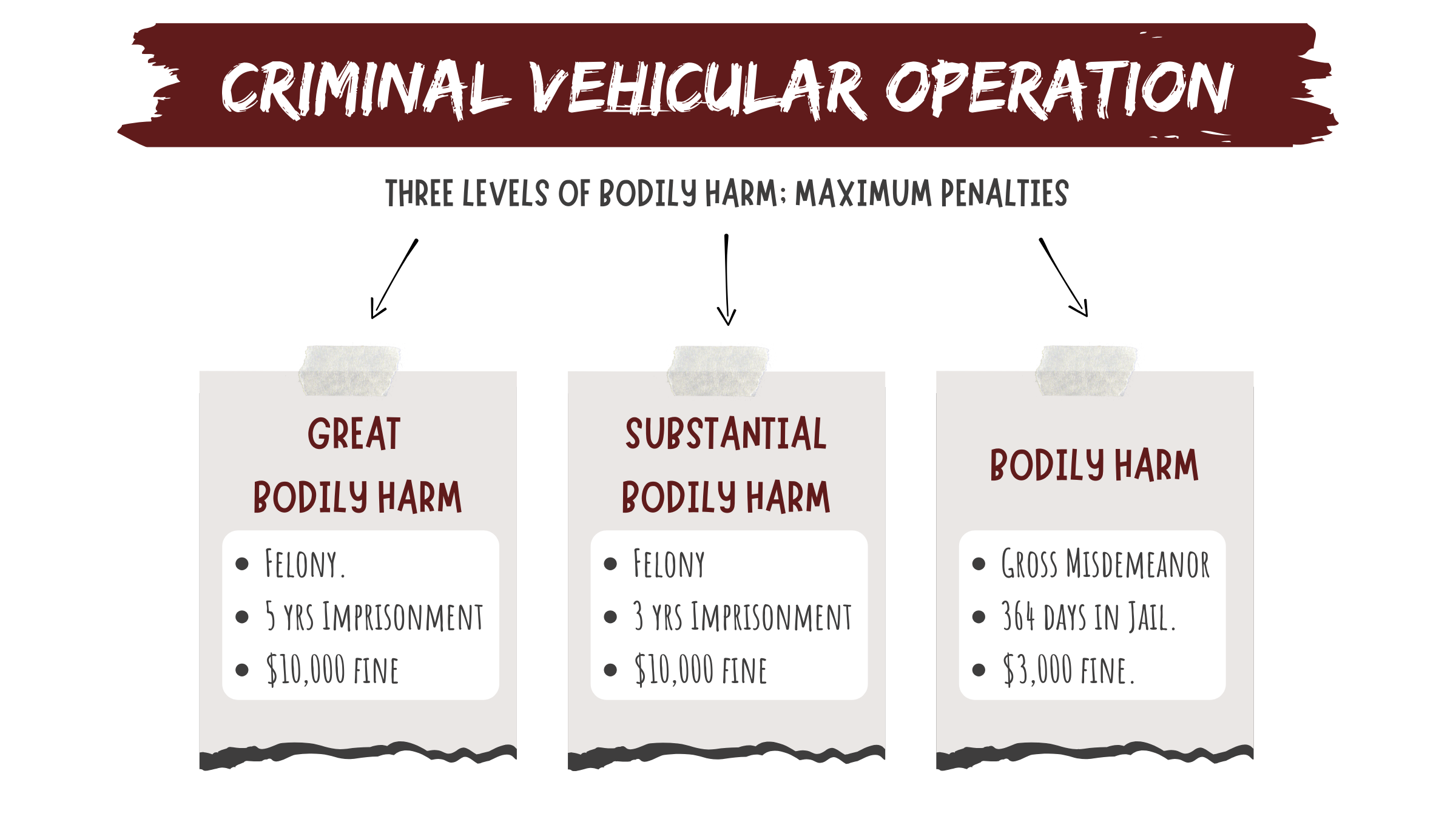
Hire a Criminal Vehicular Operation Attorney that Knows How to Win
Minneapolis CVO Attorney
Minnesota’s CVO Laws
In Minnesota, Criminal Vehicular Operation (CVO) is an offense that is typically charged when a person drives a vehicle while under the influence of alcohol and/or a controlled substance and causes bodily harm to another person. The potential penalties for a CVO conviction will depend on the severity of the harm caused. CVO is a serious offense that comes with serious consequences. It is important to have an experienced Criminal Vehicular Operation attorney on your side if you are facing this offense. CVO charges involve intricate legal issues. Trevor Lushanko understands the nuances of the law, including the elements required for a CVO conviction and potential defenses. If you are charged with CVO in Minnesota, call Lushanko Law today at 952-818-6376 for a free consultation.
Request a Free Consultation
What is Criminal Vehicular Operation?
In Minnesota, Criminal Vehicular Operation refers to a criminal offense related to the operation of a motor vehicle in a manner that endangers public safety, leading to some type of injury to another. A person can be charged with Criminal Vehicular Operation under MN statute 609.2113 if they operate a motor vehicle, resulting in injury to another, under the following situations:
In a grossly negligent manner;
In a negligent manner while under the influence of:
Alcohol;
A controlled substance;
THC; or
Any combination of alcohol, a controlled substance, and/or THC;
While having an alcohol concentration of 0.08 or more, or having an alcohol concentration of 0.08 or more within two hours of driving;
In a negligent manner while under the influence of a knowingly intoxicating substance;
In a negligent manner with any amount of a Schedule I or II controlled substance present in the person’s body aside from THC;
If the driver causing the accident leaves the scene; or
If the driver knows that a police officer issued a citation or warning that the vehicle was defectively maintained, the driver knew that no remedial action was taken to fix the vehicle, the driver had reason to know the defect created a present danger to others, and the injury was caused by the defective maintenance.
Three Levels of Harm
Criminal Vehicular Operation offenses are categorized into three levels based on the level of harm caused. These levels are differentiated by the extent of bodily harm inflicted on another person as a result of the defendant's actions. The three levels of harm associated with CVO offenses are: (1) Great Bodily Harm, (2) Substantial Bodily Harm, and (3) Bodily Harm.
1. Great Bodily Harm
Criminal Vehicular Operation resulting in great bodily harm carries the highest punishment for CVO under MN statute 609.2113 Subdivision 1 . This is a felony-level offense with a maximum penalty of 5 years imprisonment and a $10,000 fine. “Great bodily harm” means bodily injury that creates a high probability of death, serious permanent disfigurement, or a permanent or protracted loss or impairment of the function of any bodily member or organ. For example, permanent scarring or the loss of a limb would be considered great bodily harm.
2. Substantial Bodily Harm
Criminal Vehicular Operation resulting in substantial bodily harm is also a felony-level offense under MN statute 609.2113 Subdivision 2. The maximum penalty for CVO resulting in substantial bodily harm is 3 years imprisonment and a $10,000 fine. “Substantial bodily harm” is harm that causes temporary but substantial disfigurement, or which causes a temporary but substantial loss or impairment of the function of any bodily member or organ, or which causes a fracture of any bodily member. A broken bone is an example of substantial bodily harm in Minnesota. The main difference between “substantial bodily harm” and “great bodily harm” is that great bodily harm is a permanent injury while substantial bodily harm is a temporary injury.
3. Bodily Harm
Criminal Vehicular Operation resulting in bodily harm carries the lowest punishment of the the CVO offenses under MN statute 609.2113 Subdivision 3. CVO resulting in bodily harm not amounting to great or substantial harm is a gross misdemeanor level offense that carries a maximum punishment of 364 days in jail and a $3,000 fine. “Bodily harm” means physical pain or injury, illness, or any other impairment of someone’s physical condition. For example, a bruise or a scratch may be considered bodily harm not amounting to substantial or great harm.

